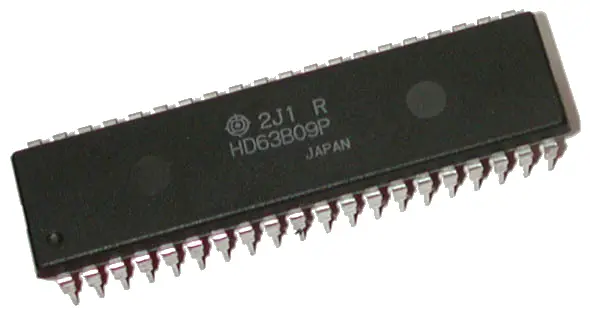Apple Mac Portable
The Apple Macintosh Portable was produced from 1989 to 1991. It is the first portable Macintosh that is battery powered. The machine had a hinged case that hid the keyboard when closed, and the screen was a black and white active matrix LCD screen, one of the first portable comsumer laptops that featured such a screen.
The screen however was not very legible in low light conditions. In February of 1991, Apple introduced an updated version of the Macintosh Portable that featured a back-lit screen. This made the screen much more usable, but cut battery time in half.
The Mac Portable had a built-in trackball that could be removed and put to either side of the keyboard. Three configurations were offered. One, or two floppy drives, or one floppy and one hard drive. The hard drive was a custom engineered Conner CP-3045 with a 40MByte capacity, it is also known as Hard Disk 40SC. The hard drive has a properietary SCSI conector making a swap for a bigger hard drive difficult. The computer was not light, it weight in at 7.3 kg due to it's heavy lead-acid battery.
This battery could run the computer for up to 10 hours. The battery was hard-wired into the AC power unit, so if the battery died, the computer could not be used. Another problem with the lead-acid battery was that it was not properly recharged, it would eventually fail because the internal capacity becomes limited with time. The capacity gets smaller and smaller until the battery cannot hold any charge at all.
The Mac Portable used two Hitachi 6309 processors, these developed by Hitachi as MOS variants of the 6809 architecture, but the processor has many new features and enhancements over the original Motorola one.
Hitachi 6309 CPU (MOS 6809 variant)
The 6309 is Hitachi's CMOS version of the Motorola 6809 microprocessor, released in late 1982. It was initially marketed as a low-power version of the 6809, without reference to its many internal improvements.
The Hitachi 6309 has an emulation mode in which it is fully compatible with the 6809. But the 6309 also has many improvements over the 6809:
- Higher possible clock rates.
- Additional registers.
- New instructions to support the additional registers.
- Hardware division
- Bit manipulation instructions
- Block transfer operations
- Enhanced math instructions (up to 32-bit math)
When run in its native mode the Hitachi 6309 is about 30% faster than the Motorola 6809.
Despite all these enhancements, Hitachi did a poor job of marketing the cpu and did not actively publish the new capabilities. It was a publication in a Japanese magazine for Fujitsu computers, the April 1988 issue of the "Oh!" magazine, that described the additional capabilities of the 6309 over the 6809. The information was then quickly spread through online forums like comp.sys.m6809

ROM: 32kB Sound Chip none Sound Beeper Display Chip none Display 4x20 text
120x32 graphics Best Text 4x20 Best Color monochrome Best Graphics 120x32 Sprites none System OS Mac OS Storage 40MByte Conner CP-3045 Hard Drive


